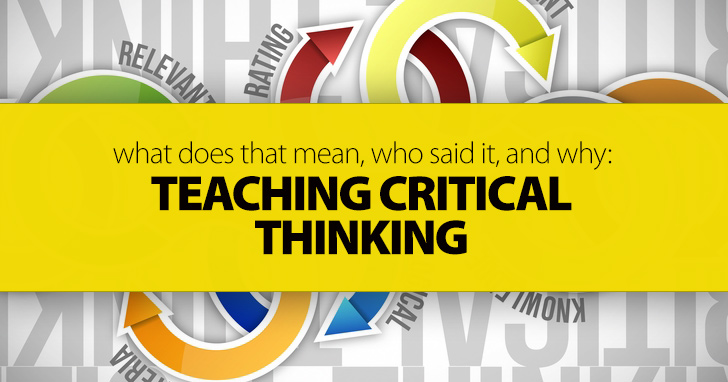The Capitalist System is the Best Economic System: Everyone Knows That. Addressing Underlying Assumptions


This kind of writing occurs frequently when arguing for the Second Amendment Rights of the U.S. Constitution, the right to bear arms. Admittedly, and not to get too political, I am on the opposite end of the believe system from many of my students, taking a stance that the nation needs to modify this right, given the amount of gun violence in the U.S. And it is not the students’ support for the Second Amendment that I have concerns with, seeing legitimate points to the argument, such as limiting this right in a country with a long history of personal ownership of firearms will almost certainly create a sizable black market. I don’t object to a well-considered argument on positions I disagree with—in fact, welcome them, seeing principled debate on such “political” topics a major component of education.
Emotional responses follow even minor examination of this claim—e.g. “Yes, of course guns don’t themselves have agency. People do indeed kill people, and they often do it with guns, which is the whole problem.” In response to this analysis, students may either fall silent, repeat the claim, or get angry because it is an claim that was passed down to them almost like a cultural or religious belief. Such a belief is not to be questioned or even really considered. However, considering previously held beliefs and examining them for weaknesses is the very essence of education and usually results in either discarding the belief or affirming it. Getting students to engage in this kind of examination involves teaching certain “habits of the mind” that is often new and threatening to them.What I object to is almost rote arguments such as “Guns don’t kill people, people kill people.”

Originating in journalism, the five “wh--” questions are also useful in critical thinking skills. Take students through examining a claim with the five “wh--” questions: Who said ‘Guns don’t kill people?” “What was his audience when he said this?” “Where and in what context did he say it?” “When did he say it?” and “Why would he have said it?” This gets students to really think about the context and purpose of the claim and if that context and purpose are even applicable outside its original.
Teaching the recognition of logical fallacies is a fundamental part of developing critical thinking and the ability to analyze flaws in arguments. For example, a classic fallacy in the right to bear arms debate is the “Straw Man Argument,” which is the major weakness of the claim “Guns Don’t Kill People, People Kill People.” This argument takes and builds up, like a “straw man, ” the weakest part of what is assumed to be the opposition’s main argument: in this case, the lack of understanding that guns don’t have agency of their own and can’t operate by themselves. After building up the “straw man,” the speaker then makes a show of knocking it down. Teaching how to analyze an argument for such fallacies builds critical thinking skills. For example, last semester I introduced the “slippery slope argument” by showing its application in a popular series of TV commercials: “If you don’t get Direct TV, you get depressed. If you get depressed, you go to motivational seminars. When you go to motivational seminars, you gamble. When you gamble, you lose your money and get beat up by loan sharks. Don’t get beat up by loan sharks. Get Direct TV!” Showing students how the argument starts with one event and taking it to ridiculous extremes, from the decision not to buy a product to getting beat up by gangsters, not only gets students laughing buy also teaches them to recognize the fallacy in more serious topics: one student, for example, saw the slippery slope argument in the claim that the legalization of same-sex marriage will inevitably lead to people being allowed to marry their pets.
The analysis of fallacies and how they are applied will probably lead to students researching an issue. For example, finding out who first observed “guns don’t kill people…” will lead students to looking up the quote and finding out who it is usually attributed to, what organizations he was connected to, what context he said it in, and therefore some of the history of the debate. Along the way, students will also look up the exact text of the Second Amendment concerning the right to bear arms, the foundation of the debate rests on. Having gone through these steps, students acquire a basic knowledge of the history of this issue.
I sometimes am chided about for being “too political” in the classroom. But what can the examination of important contemporary issues be but “political”? And what is the purpose of education in a democracy without the critical examination of issues that relate directly to that democracy? The desire to avoid these issues at a dinner party is entirely understandable as heated debate interferes with the dining experience and digestive process. But heated debate is expected within the classroom. Getting students to recognize the appropriateness of bringing up topics that may cause discomfort is part of the educational process.
One reason people are often uncomfortable with debate on “political” issues is we have lost the art of civil disagreement, with even our political leaders on national TV during a formal debate engaging in ad hominem attacks—that is, attacking the person rather than the argument—and childish behavior like eye-rolling. Be an agent of change to bring civil disagreement back. Teach students the language to use to respectfully disagree: to ask for clarification of a point, actually listen to the opposition and then acknowledge the counterargument, conceding its strengths before (respectfully) addressing its weaknesses. Civil disagreement is a cornerstone of our democracy.
Having learned these skills of researching the context of an issue and its background, searching for logical fallacies, and practicing civil disagreement, students will be ready to move on to a more formal debate. However, even without that last step, students will have, through this process, developed important critical thinking skills they will use throughout their education.